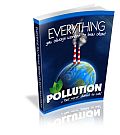Pollution Control Guide
Pollution Control Section
Pollution Control Navigation
Main Home PagePartners
Tell A Friend about us
Measures To Control Air Pollution |
Measures To Control Air Pollution |
Water Pollution Control |
Requirements For Control Of Pollution |
Air Pollution Control Equipment |
Air Pollution Control System |
Water Pollution Control |
Water Pollution Control |
Pollution Control |
Measures To Control Air Pollution |
List of Pollution-Control Articles
Best Pollution Control products

Newsletter
Subscribe to our newsletter AND receive our exclusive Special Report on Pollution-Control
Main Pollution Control sponsors
Latest Pollution Control Link Added
INSERT YOUR OWN BANNER HERE
Submit your link on Pollution Control!
Newest Best Sellers

